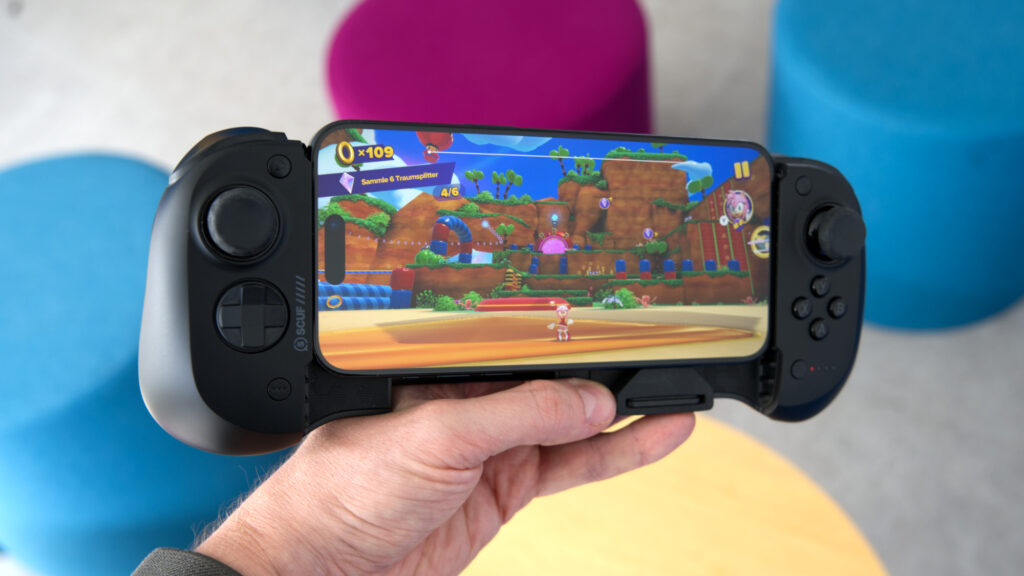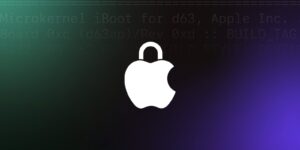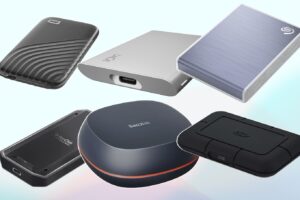Scuf Nomad review: Compact iPhone controller with customization options

Expert’s Rating
Pros
Can also be used as a normal Bluetooth controller
Quiet buttons
Hall effect sticks
Interchangeable stick caps
Cons
iPhone cannot be charged while playing
Our Verdict
The Scuf Nomad is a compact Bluetooth controller for the iPhone that also works with iPads, Macs, and some Android devices. The accompanying app offers extensive customization options, ranging from simple button assignments to the dead zone of the sticks and triggers and how they react to inputs. The Scuf Nomad is quite small so it is probably not for people with large hands. In addition, the smartphone cannot be charged while playing.
Price When Reviewed
This value will show the geolocated pricing text for product undefined
Best Pricing Today
Price When Reviewed
$99.99
Best Prices Today: Scuf Nomad
Scuf Gaming (a gaming controller division of Corsair) introduced the Scuf Nomad smartphone controller, joining a small-but-growing niche of mobile gaming controllers that turn the smartphone into a gaming handheld and produce something resembling the design of the Nintendo Switch.
This niche has been populated by Razer with the Razer Kishi V2 and Razer Kishi Ultra, the Backbone One and the GameSir X3 and X2 Pro. In contrast to the competition, Scuf takes a completely different approach: the controller does not connect to the iPhone via a plug (USB-C or Lightning), but via Bluetooth.
Eugen Wegmann
Design and controls
As usual in this product category, the Scuf Nomad looks like an ordinary game controller that has been sawn in half and reconnected with a bridge. The first major difference to the competition: Scuf uses a different button layout that does not correspond to the Xbox (and Switch) or Playstation layout.
The analog sticks are located at the top of both halves, with the directional pad and the A-B-X-Y buttons underneath. The layout is similar to the Nintendo Wii U Pro Controller, or more precisely when an iPhone is mounted, the Wii U gamepad–you know, the giant controller with the screen inside.
The sticks themselves are interesting because Scuf doesn’t rely on classic sticks with potentiometers, which are used in the Xbox Wireless Controller, the Playstation Dualsense, the Nintendo Joy-Cons and most other controllers on the market. Instead, Scuf uses Hall-effect sticks in the Nomad, which are based on a magnetic operating principle and minimize the so-called “stick drift”. This is caused by dirt and wear on the contacts in classic analog sticks and leads to incorrect inputs.
However, if you are used to conventional sticks, you’ll need to get used to the Hall-effect sticks, as the resistance is significantly lower and the movements a little more wobbly. Perhaps Scuf could have simply used slightly harder springs here.
Eugen Wegmann
Two additional caps for the sticks are included. Concave (curved inwards) caps are installed on the Nomad as standard, while the ones on the left are convex (curved outwards), as was common on the Playstation until the Dualshock 4 controller. The Nomad also includes a small adapter (ultimately a rubber spacer) for the iPhone 14 and 15 phones, so that the camera module does not rest on the bridge, and a generously dimensioned braided USB-A to USB-C cable.
The controller has a total width of just over 20 centimeters and can be stretched to around 37 centimeters, with an internal distance between the two halves of around 17 centimeters. This is large enough for all smartphones, but unfortunately a little too small for the iPad mini. The size is therefore between the Razer Kishi V2 and the Kishi Ultra; not quite as compressed as the former, but also not as spacious as the latter.
Nevertheless, the Scuf Nomad is around 100 grams heavier than the small Kishi V2 and only 37 grams lighter than the large Kishi Ultra. This is primarily because the Nomad connects to the iPhone via Bluetooth and requires its own battery. This is charged via USB-C on the underside of the left half–there is no USB-C passthrough as with the Kishi Ultra. The Bluetooth pairing button is located on the underside of the right half.
This is one of the reasons why an iPhone cannot be charged when it is clamped in the Scuf Nomad. There are no cut-outs for a cable or a MagSafe charger. As the controller supplies itself with power, you also have to explicitly switch it on and off. To do this, you have to press the home button at the top left until the LEDs at the bottom right light up or go out again. If you don’t notice the little hint in the app tutorial, you’ll have to try a bit, especially when switching off.
The workmanship is satisfactory all round. The contact points with the iPhone (the bridge and the inside) are rubberized, the back of the handles are also rubberized for a better grip and the plastic does not feel cheap. The relatively high weight compared to the size contributes to a high sense of value.
Eugen Wegmann
Usability
As mentioned at the beginning, the layout of the Scuf Nomad most closely resembles the Wii U controller. The only differences are the plate-like directional pad, which is reminiscent of a shrunken version of the Xbox Wireless Controller, and the positioning of the menu and option buttons. These are located below the directional pad and the main buttons.
The Scuf Nomad also has two additional paddles on the back of the controller that are best reached with the middle fingers and can be freely assigned in the corresponding app.
Above the left stick is the home button, which corresponds to the Xbox button on an Xbox controller in Xbox Cloud Gaming and opens the iOS Game Center in games from the App Store. Above the right stick is the Scuf button, which opens the Scuf app when pressed once, takes a screenshot when pressed twice, and starts and stops a video recording when pressed and held.
Eugen Wegmann
My only criticism of the layout is the main A, B, X and Y buttons. They are so close together that I sometimes press two of them with my not-so-large thumb in the heat of the moment.
Eugen Wegmann
In contrast to the two Kishis mentioned in this review, the Nomad’s keys are largely quiet. The two buttons on the back are the loudest, followed by the clicking analog sticks. Overall, I would have no qualms about playing with the Nomad in the quiet compartment of an train, especially as the buttons on the back are completely optional.
Compatibility
The Scuf Nomad is fully MFi-certified and therefore perfectly compatible with Apple devices. However, iOS 16 or later is required. The iPhone X and iPhone 8 and the oldest iPhones that can be used with the Nomad.
Although Scuf does not explicitly mention it, the Nomad also works flawlessly with Macs and iPads, although iPadOS 16 or later is also required for the latter. This means that the Nomad can be used as more than just an iPhone controller, making it more versatile than the competition with a plug connection.
Unlike the Kishi Ultra, an iPad mini does not yet fit inside, but you can place it on a folding table on a train or airplane and play with it.
If you are an Android user and have stumbled across this test report, Scuf officially states that the Nomad is not compatible with Android or is still working on it. A PCWorld colleague was able to pair and use it with her Oppo A55 without any problems. The biggest limitation is that there is no companion app for Android where you can configure the additional features.
Scuf Nomad Companion app
Nothing works without an app these days, so there is also an iPhone app for the Scuf Nomad, the Scuf Nomad Companion. Well, strictly speaking, the Nomad does work as an ordinary Bluetooth controller without an app, but then you have to do without some additional functions.
For example, the app is required to assign the two paddles on the back; the A and B buttons are assigned to them by default. You can also change the overall button assignment there. But that’s not all: alternative button assignments can be saved in individual profiles and then assigned to games, which can be an advantage if, for example, you play shooters with one button assignment and action RPGs (or other genres) with another.
Not only the function of the buttons can be set here, but also the dead zone of the sticks and triggers and whether they react linearly, exponentially, dynamically, or aggressively to inputs. There is a lot of potential for experimentation and optimization here.
Three platforms are available for quick access: Xbox Game Pass, Apple Arcade, and PS Remote Play.
Eugen Wegmann
Three gaming platforms are integrated into the app: Apple Arcade, Playstation, and Xbox Cloud Gaming. The respective game selection opens in the Scuf Nomad Companion interface; what happens next depends on the service. Games in Apple Arcade either start directly or link to the App Store if they are not installed.
With Playstation, you can choose whether games are opened in the PS app or in PS Remote Play, Xbox Cloud Gaming is started as a PWA in a browser window in which you have to log in separately with a Microsoft account.
Eugen Wegmann
The app also contains a gallery of all recorded screenshots and videos, the quality of which can also be adjusted in the app. The controller firmware is also updated via the app.
Last but not least, it should be mentioned that Scuf does not require an account and you can use the app and controller without a Scuf or Corsair account.
Should you buy the Scuf Nomad?
The Scuf Nomad is a compact Bluetooth controller for the iPhone that also works with iPads, Macs, and some Android devices. The accompanying app offers extensive customization options, ranging from simple button assignments to the dead zone of the sticks and triggers and how they react to inputs. The Scuf Nomad is quite small so it is probably not for people with large hands. In addition, the smartphone cannot be charged while playing.




